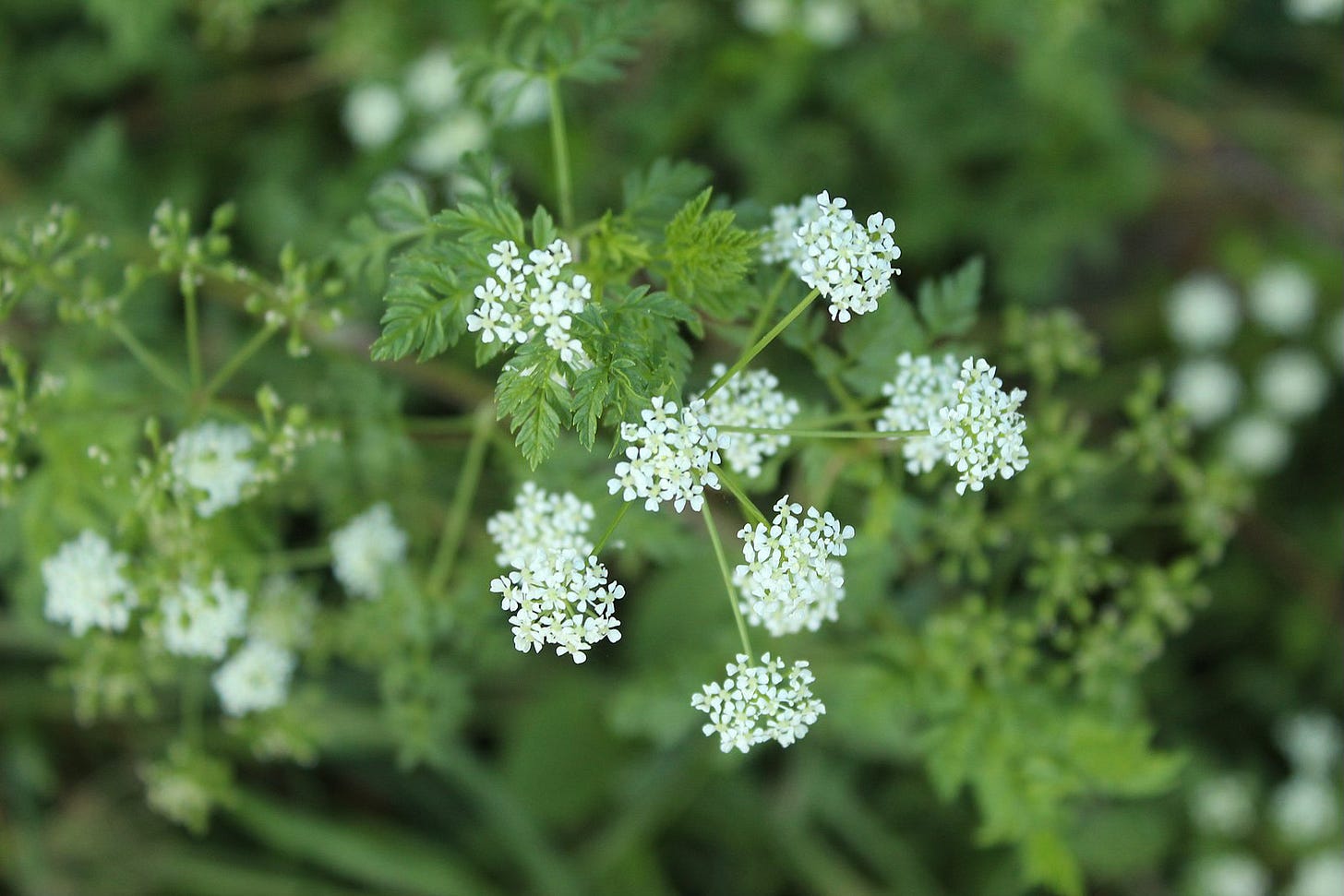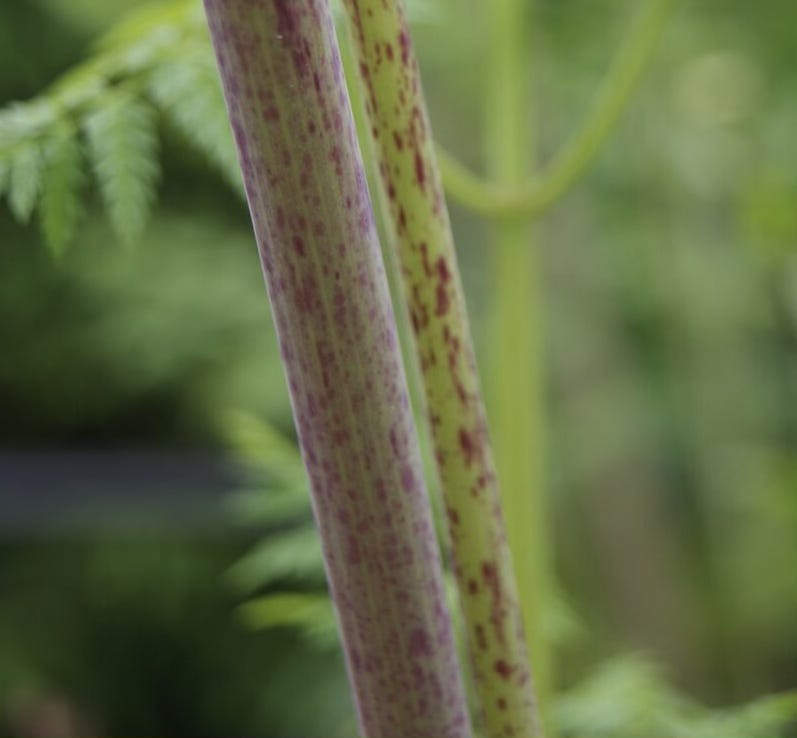Identifying Poison Hemlock
Identifying this toxic plant in the wild, what to do if you encounter it, and interesting facts about the its history.
Poison hemlock (Conium maculatum) is a highly toxic wild plant. It’s often mistaken for benign species like Queen Anne’s Lace (wild carrot) or parsley. This biennial herb has fern-like, finely divided leaves and clusters of tiny white flowers that bloom in umbrella-shaped umbels, typically from late spring to summer.

Its hollow stems, often reach 4-10 feet in height and are speckled with distinctive purple spots, earning it the nickname “Spotted Hemlock.” The plant emits a musty odor when crushed, and its taproot resembles a parsnip, adding to the confusion for foragers.

If the name sounds familiar, it’s because poison Hemlock earned a dark reputation as the execution method for the philosopher Socrates in 399 BCE, who was sentenced to drink a Hemlock-infused brew (due to both disrespecting the gods and influencing the youth to challenge authority).
Today, the poisonous plant grows unchecked along roadsides, riverbanks, and disturbed soils. It’s mostly found in temperate regions across North America, Europe, and Asia. Every part of Hemlock contains deadly alkaloids like coniine, which paralyze the nervous system. Hemlock seeds tend to best germinate in cool, moist conditions.
Hemlock may seem like the bad guy of plants, but it’s not without ecological purpose.
Hemlock’s nectar-rich flowers attract pollinators like bees, hoverflies, and beetles, supporting broader biodiversity in areas where native plants struggle. However, this benefit comes at a cost. The plant’s aggressive spread can outcompete native species, reducing habitat diversity, and its toxicity poses a lethal risk to animals. Deer and birds naturally avoid it, but cattle and sheep aren’t so discerning, and ingestion is often fatal.
Recognizing hemlock is step one: look for those spotted stems and lacy leaves. Step two is ecological stewardship; if the hemlock not a direct threat, just leave it alone. If it’s near pastures or your home, you may consider finding a safe removal process.
If You Have To Remove Hemlock
Poison hemlock is toxic if ingested, touched (sap can irritate skin), or inhaled (e.g., during mowing). Take these steps:
Wear protective clothing: long sleeves, pants, gloves, and eye protection.
Avoid skin contact with the plant or its sap.
Do not burn it, as burning releases toxic fumes.
Wash hands, tools, and clothing thoroughly after handling.
If seeds have formed, cut off flower heads first, bag them, and dispose of them to prevent spread. Then remove the rest of the plant. As much as we don’t like using plastic, we don’t like fatal plants more, so it’s best to seal all plant material in plastic bags and dispose of it in a landfill. Do not compost or leave it where animals or people might get into it. If the infestation is extensive or near water sources (where herbicides are restricted), hire a licensed professional to ensure safe and legal removal.



